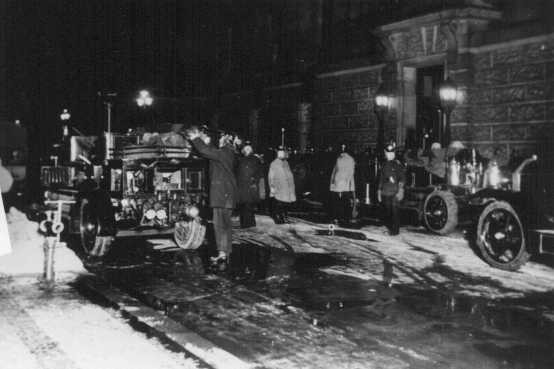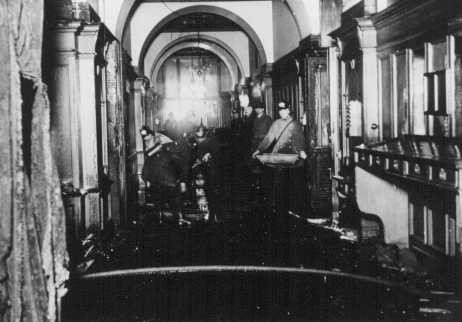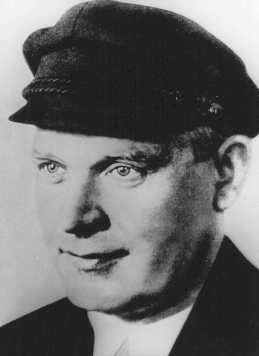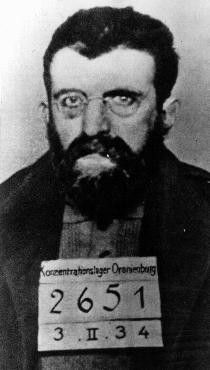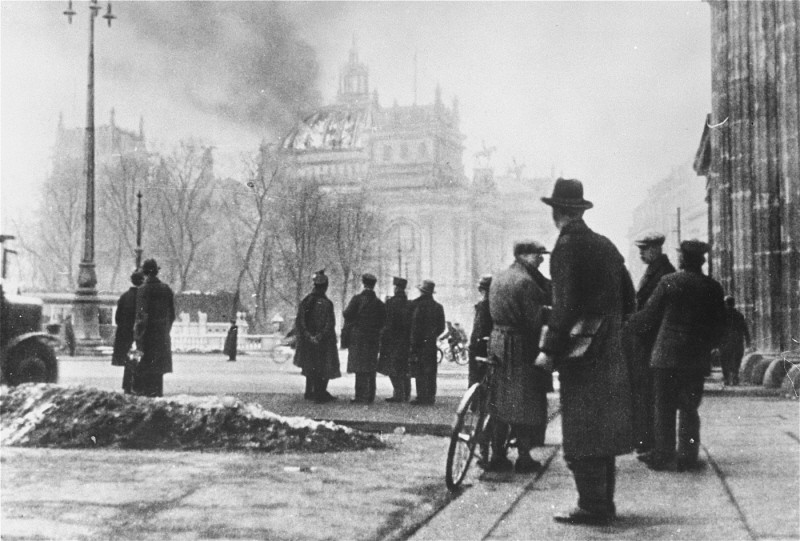
The Reichstag Fire
On February 27, 1933, the German parliament (Reichstag) building burned down. The Nazi leadership and its coalition partners used the fire to claim that Communists were planning a violent uprising. They claimed that emergency legislation was needed to prevent this. The resulting act, commonly known as the Reichstag Fire Decree, abolished a number of constitutional protections and paved the way for Nazi dictatorship.
Key Facts
-
1
Implemented one day after the fire, the decree suspended the right to assembly, freedom of speech, freedom of the press, and other constitutional protections, including all restraints on police investigations. It remained in effect until Nazi Germany was defeated in May 1945.
-
2
The decree permitted the regime to arrest and incarcerate political opponents without specific charge, to dissolve political organizations, and to confiscate private property.
-
3
The decree also gave the regime the authority to overrule state and local laws and overthrow state and local governments.
On February 27, 1933, the German parliament (Reichstag) building burned down due to arson. The Nazi leadership and its German Nationalist coalition partners exploited the fire to persuade President Paul von Hindenburg that Communists were planning a violent uprising to derail Germany’s "national renewal." They claimed that emergency legislation was needed to prevent this. Commonly known as the Reichstag Fire Decree, the resulting act “For the Protection of the People and State” abolished a number of constitutional protections and paved the way for Nazi dictatorship.
Using emergency constitutional powers, Adolf Hitler’s cabinet had issued a Decree for the Protection of the German People on February 4, 1933. This decree placed constraints on the press and authorized the police to ban political meetings and marches, effectively hindering electoral campaigning. A temporary measure, it was followed by a more dramatic and permanent suspension of civil rights following the February 27 burning of the parliament building.
Though the origins of the fire are still unclear, in a propaganda maneuver, the coalition government (Nazis and the German Nationalist People's Party) blamed the Communists. They exploited the Reichstag fire to secure President von Hindenburg’s approval for an emergency decree, the decree "For the Protection of the People and State" of February 28, one day after the burning of the Reichstag. Popularly known as the Reichstag Fire Decree, the regulations suspended the right to assembly, freedom of speech, freedom of the press, and other constitutional protections, including all restraints on police investigations.
Justified on the false premise that the Communists were planning an uprising to overthrow the state, the Reichstag Fire Decree permitted the regime to arrest and incarcerate political opponents without specific charge, dissolve political organizations, and to suppress publications. It also gave the central government the authority to overrule state and local laws and overthrow state and local governments.
The Nazi press described the Reichstag fire as the work of the Communists and a signal for their planned uprising. Even the US independent Fox Movie Tones newsreel reflected the German government version. Although the Communists had not, in fact, developed any plans for an uprising, the impact of propaganda and terror on existing fears of a Communist takeover convinced many Germans that Hitler’s decisive action had saved the nation from “Bolshevism.”
Within months, for example, the Nazi regime destroyed Germany’s previously vigorous free press. By 1941, the Nazi Party’s Eher publishing house had become the largest ever in German history, and its main daily newspaper, the Völkischer Beobachter (The National Observer) had reached a circulation of over 1,000,000.
Critical Thinking Questions
- How can the use of emergency legislation or powers (in the face of a perceived crisis) be a warning sign for mass atrocity later on?
- What was the role of the legal and judicial system as the resulting Reichstag Fire Decree was created and implemented?
- How can knowledge of the events in Germany and Europe before the Nazis came to power help citizens today respond to threats of genocide and mass atrocity in the world?


